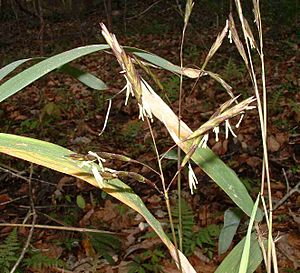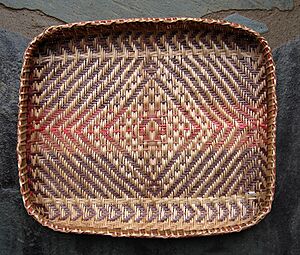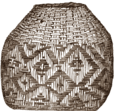Cane (grass) facts for kids
Quick facts for kids Cane (grass) |
|
|---|---|
 |
|
| Arundinaria gigantea northern Florida in March 2003 |
|
| Scientific classification |
|
| Kingdom: | Plantae |
| Clade: | Tracheophytes |
| Clade: | Angiosperms |
| Clade: | Monocots |
| Clade: | Commelinids |
| Order: | Poales |
| Family: | Poaceae |
| Subfamily: | Bambusoideae |
| Tribe: | Arundinarieae |
| Subtribe: | Arundinariinae |
| Genus: | Arundinaria Michx. |
| Synonyms | |
|
|
Arundinaria, also known as canes, is a type of bamboo. It belongs to the grass family. Scientists have long discussed which bamboo species should be part of Arundinaria. Some think only North American types belong here. Others include Asian species too.
Arundinaria is the only bamboo that naturally grows in North America. You can find it in the south-central and southeastern United States. This includes areas from Maryland down to Florida and west to Texas. It grows from flat coastal areas up to the Appalachian Mountains. These plants have underground stems called rhizomes that spread. They are woody and can grow tall, from about 0.5 to 8 metres (1.6 to 26.2 ft) high. Canes rarely produce seeds. They usually spread by growing new plants from their rhizomes. This forms large groups of the same plant. A cool feature of canes is a fan-like group of leaves at the top of new stems. This is called a top knot.
Discovering Arundinaria
The history of naming Arundinaria is quite old and interesting. In 1788, a botanist named Thomas Walter first described these plants. He thought they were a type of reed grass called Arundo. Later, in 1803, André Michaux studied the same plants. He didn't know about Walter's work. Michaux realized these canes were special. He created a new group, or genus, for them called Arundinaria.
Over time, other scientists like G.H.E. Muhlenberg and A.S. Hitchcock worked on classifying these plants. It was hard because the early descriptions weren't very clear. In 2009, scientists used special plant samples called epitypes. These samples helped clarify the older names. This made it easier to understand the different types of Arundinaria.
Types of Arundinaria Canes
Today, scientists agree there are three main species of Arundinaria. These are all found in the southeastern United States.
- Arundinaria appalachiana – This is known as Hill cane.
- Arundinaria gigantea – This is called River cane.
- Arundinaria tecta – This one is known as Switch cane.
How Canes Were Used
Canes were incredibly important to Native Americans in the Southeastern Woodlands. This was especially true before Europeans arrived. They used the plant for many things.
- Building and Tools: Canes were used to make houses, arrows, and weapons. They also made fishing gear and furniture.
- Everyday Items: People crafted baskets, jewelry, and musical instruments from cane. They even made pipe stems and boats.
- Food and Medicine: Parts of the plant were eaten, like young shoots. However, it's important to be careful. A harmful fungus called Ergot can grow on the seeds. The Choctaw people used cane roots for pain relief.

Large areas of Arundinaria once grew across the land. These were called canebrakes. They were very common in river lowlands. These canebrakes were huge, covering thousands of acres. They provided great land for crops and homes for wild animals. They also offered food for livestock all year round.
Sadly, many canebrakes have disappeared. This happened because of land clearing for farming and efforts to stop fires. After Europeans came, cane became less important. This was due to the loss of canebrakes and new technologies.
Images for kids



